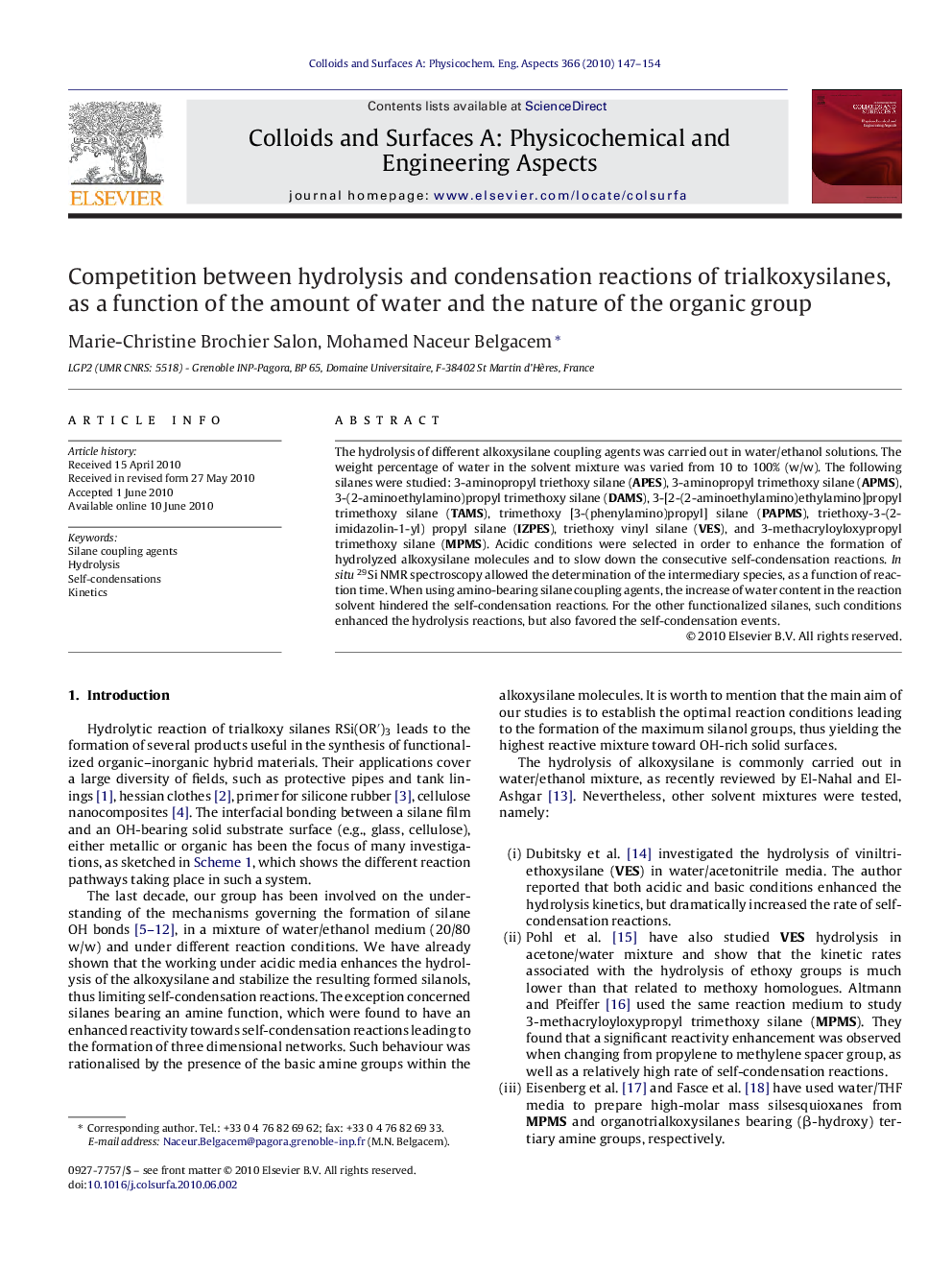| Article ID | Journal | Published Year | Pages | File Type |
|---|---|---|---|---|
| 595235 | Colloids and Surfaces A: Physicochemical and Engineering Aspects | 2010 | 8 Pages |
The hydrolysis of different alkoxysilane coupling agents was carried out in water/ethanol solutions. The weight percentage of water in the solvent mixture was varied from 10 to 100% (w/w). The following silanes were studied: 3-aminopropyl triethoxy silane (APES), 3-aminopropyl trimethoxy silane (APMS), 3-(2-aminoethylamino)propyl trimethoxy silane (DAMS), 3-[2-(2-aminoethylamino)ethylamino]propyl trimethoxy silane (TAMS), trimethoxy [3-(phenylamino)propyl] silane (PAPMS), triethoxy-3-(2-imidazolin-1-yl) propyl silane (IZPES), triethoxy vinyl silane (VES), and 3-methacryloyloxypropyl trimethoxy silane (MPMS). Acidic conditions were selected in order to enhance the formation of hydrolyzed alkoxysilane molecules and to slow down the consecutive self-condensation reactions. In situ29Si NMR spectroscopy allowed the determination of the intermediary species, as a function of reaction time. When using amino-bearing silane coupling agents, the increase of water content in the reaction solvent hindered the self-condensation reactions. For the other functionalized silanes, such conditions enhanced the hydrolysis reactions, but also favored the self-condensation events.
